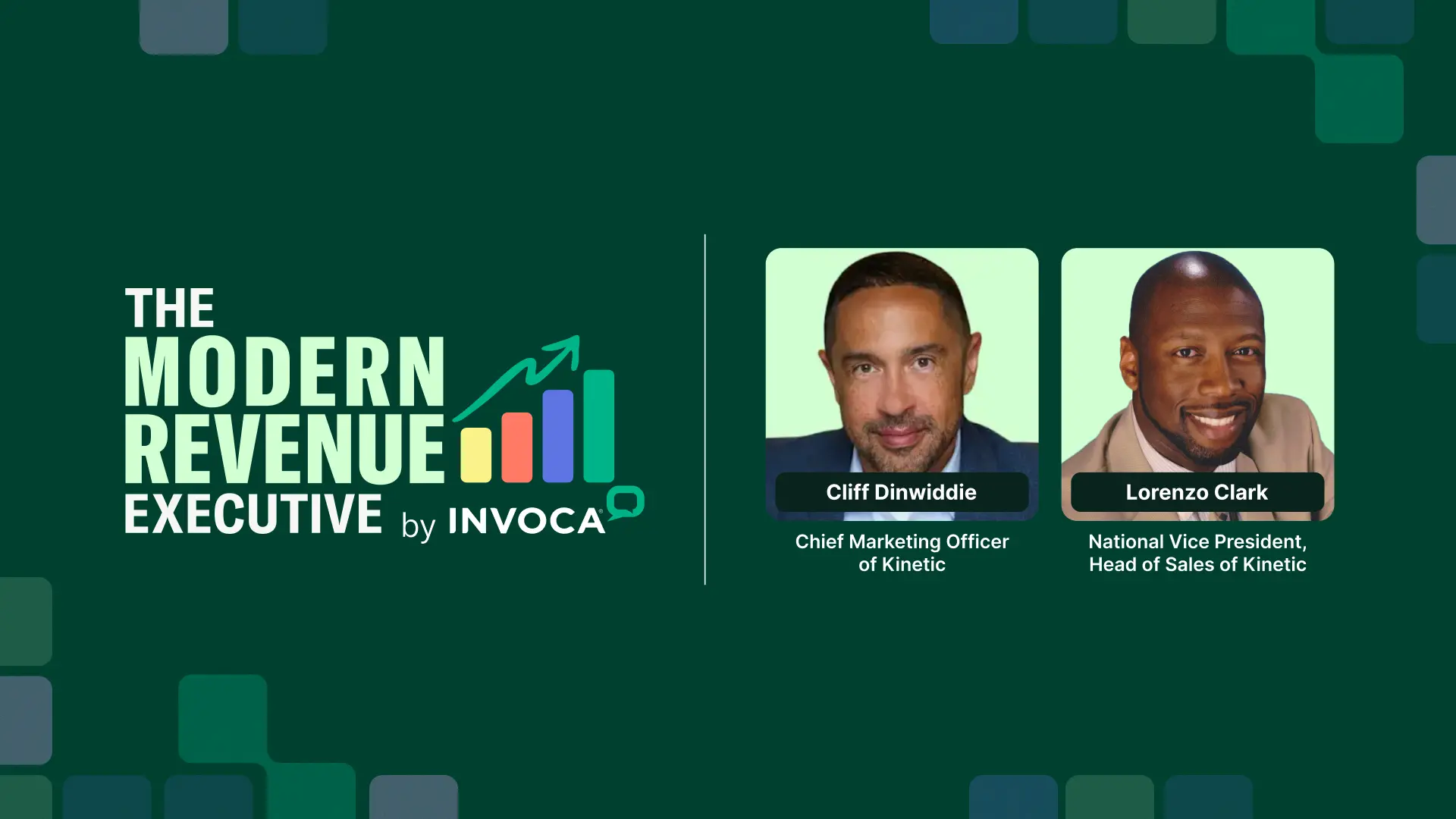In each episode of Invoca’s new podcast, The Modern Revenue Executive, CEO Gregg Johnson meets with revenue leaders from B2C brands to uncover their winning strategies.
Episode one kicked off the series right as Gregg sat down with Michelle Barbo, Chief Revenue Officer at eHealth. With a background spanning General Mills, UnitedHealthcare, and leading eHealth's turnaround from a $100 million EBITDA loss to profitability, Barbo offered a unique perspective on revenue alignment.
Keep reading to learn the five most important takeaways from the conversation. You can also watch the video below or tune in to your favorite streaming network to catch the whole conversation!
1. Shared KPIs Are the Secret to Sales and Marketing Alignment
One of the biggest sources of friction between sales and marketing teams is finger-pointing over lead quality and conversion rates. Barbo's solution is elegantly simple: create shared ownership through unified KPIs.
"When the teams use different KPIs, there can be a lot of finger-pointing," Barbo said. "You hear, ‘boy, marketing is sending through crap leads and I can't convert them,’ or ‘sales isn't working hard enough.’ But all that changes when teams align on the same KPIs and work toward shared goals."
At eHealth, this manifests in daily standups where both teams study the same dashboard together — sales occupancy, agent performance, and marketing channel metrics, all in one place. This transparency not only eliminates disputes over data but also opens the door to collaborative problem-solving. Sales can suggest marketing optimisations, and marketing can provide insights that improve sales performance.
As a result, the teams understand how they can work together more effectively. This leads to what Barbo describes as a "snowball effect" of collaboration and performance improvements.
2. Unify Your Data Teams to Create One Source of Truth
Arguing over different versions of the truth is one of the most common and most destructive dynamics between sales and marketing organisations. Barbo addressed this head-on by consolidating analytics teams.
"Any CRO knows data is the backbone of everything that you do, and at eHealth, it’s no different,” said Barbo. “I realised we had data teams in several different departments, and they weren’t working together. This created a lot of inconsistencies. We decided to unify the data teams, and that changed everything.”
By merging analytics functions under one roof, eHealth eliminated the "he said, she said" dynamic that plagues many organisations. When everyone looks at the same data with the same definitions, conversations shift from defending territory to optimising outcomes.
This reinforces the principle that alignment isn't just about goodwill or communication — it requires organisational design that makes collaboration the path of least resistance.
3. AI Should Enhance Human Interactions, Not Replace Them
In an industry as complex and emotionally charged as health insurance, eHealth has taken a thoughtful approach to AI implementation. Rather than using automation to replace human advisors, they've deployed it to extend capacity and improve the customer experience.
When describing eHealth’s AI agents, which handle off-hours calls, Barbo said, "What’s most amazing to me is how human they are. The agents can actually change the pace of the conversation to match where the consumer is at. And when a customer referenced someone in their family that had recently passed away, the AI paused and offered empathy instead of just plowing through to gather the rest of the information.”
The AI screens calls, gathers essential information, and then seamlessly transfers to licensed advisors who can focus on deeper consultation. As Barbo put it, "Our advisors love the AI because it handles the tedious work of gathering information so that our human agents can go deeper with the consumer."
This approach, which Barbo calls "synthetic authenticity," demonstrates that the most effective AI implementations augment human capabilities rather than attempting to eliminate the human element entirely.
4. Put the Consumer First, and Business Results Follow
When Barbo joined eHealth as CMO, the company was tech-focused but lacked a clear brand identity. To solve this issue, she went straight to consumers for answers.
"They told us how complex and hard health insurance can be to navigate. And frankly, all of the advertising was not helpful. It only added to it. Think spokespeople yelling at you, flashing lights, and messages saying that your time is running out. But it wasn't really helping solve our consumers’ underlying needs."
The consumer insight that transformed eHealth's approach came when customers said the concept of unbiased insurance comparison "couldn't possibly be real" and questioned why the service was free. This led to transparent messaging: "It's free because we're paid by the insurance companies to help you. And we're unbiased because the sales team is paid the same, no matter what plan you find."
This consumer-first philosophy delivered real revenue growth. In addition, it earned eHealth industry recognition, like a Modern Healthcare Marketing Impact Award. “Never lose sight of what your consumer needs,” said Barbo. “That should be your guiding principle when making decisions.”
5. Build Retention Into Your Strategy From Day One
For subscription-based businesses, acquisition cost without retention consideration is a recipe for disaster. At eHealth, where lifetime value spans two to three years, retention isn't an afterthought — it's a dedicated business unit.
“We made retention its own business with a dedicated leader because it’s an economic driver for us,” said Barbo. “Our lifetime value ranges between two and three years, and we want to make sure we retain consumers throughout that timespan and keep them happy.”
But the retention focus goes beyond economics. eHealth provides proactive outreach before the next annual enrollment period, helps customers schedule preventive care appointments, and offers guidance on plan changes — all services that improve customer experience while driving retention lift.
Barbo preached that retention requires the same level of strategic focus, dedicated leadership, and organisational alignment as acquisition. It can't be bolted on as an afterthought or treated as someone else's problem.
Listen to the Full Episode
Want to listen to the full conversation between Gregg and Michelle? Tune in to your favorite streaming network below:

